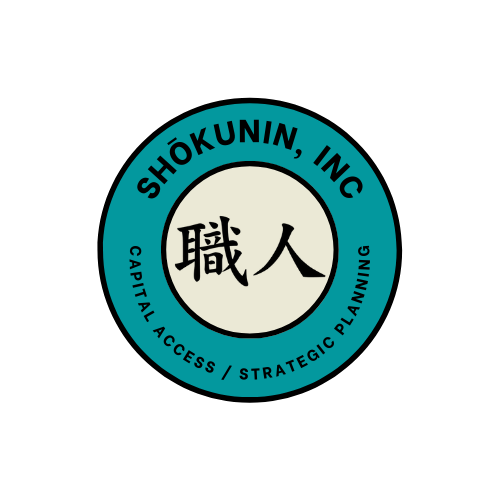For a business to thrive, it’s crucial to understand the key financial metrics that reflect its operational efficiency. One such crucial metric is the Asset Turnover Ratio, which sheds light on how effectively a company uses its assets to generate revenue. This essay aims to delve deep into the asset turnover ratio – its definition, calculation, importance, ways to improve it, and its role in qualifying for financing options like SBA loans and working capital solutions like BankRoll and FlexPay.
What is the Asset Turnover Ratio?
The Asset Turnover Ratio is a financial metric that measures the efficiency of a company in using its assets to generate revenue. In essence, it shows how many dollars in sales a company makes for each dollar invested in assets. This ratio is particularly important as it directly relates to a company’s operational efficiency and profitability.
How to Calculate the Asset Turnover Ratio: Steps & Formula
The Asset Turnover Ratio is calculated by dividing a company’s net sales (or revenue) by its average total assets during a period.
Asset Turnover Ratio = Net Sales / Average Total Assets
Average total assets are calculated by adding the beginning and ending total assets for a period and dividing by two.
Here are the steps to calculate the Asset Turnover Ratio:
- Determine the net sales: This can be found on the company’s income statement.
- Determine the total assets at the beginning and end of the period: This can be found on the company’s balance sheet.
- Calculate the average total assets for the period.
- Divide the net sales by the average total assets.
Asset Turnover Ratio: Examples
Let’s consider two examples – one from a retail company and another from a manufacturing company – to illustrate the Asset Turnover Ratio calculation.
Example 1: Retail Company
A retail company has net sales of $1,000,000 for the fiscal year. The company’s total assets at the beginning and end of the year were $400,000 and $600,000, respectively.
The average total assets = ($400,000 + $600,000) / 2 = $500,000
Therefore, the Asset Turnover Ratio = $1,000,000 / $500,000 = 2
This indicates that the retail company generated $2 in sales for every dollar invested in assets.
Example 2: Manufacturing Company
A manufacturing company reports net sales of $800,000 for the fiscal year. The company’s total assets at the beginning and end of the year were $500,000 and $700,000, respectively.
The average total assets = ($500,000 + $700,000) / 2 = $600,000
Therefore, the Asset Turnover Ratio = $800,000 / $600,000 = 1.33
This shows that the manufacturing company generated $1.33 in sales for each dollar invested in assets.
These examples illustrate how the Asset Turnover Ratio can differ across industries. Typically, retail companies, which deal primarily with finished goods, tend to have higher asset turnover ratios than manufacturing companies, which often have more invested in fixed assets like machinery and equipment.
What is a Good Asset Turnover Ratio?
A ‘good’ Asset Turnover Ratio can vary greatly depending on the industry and the nature of a company’s assets. Industries with low profit margins usually have high asset turnover ratios, while industries with high profit margins typically have low asset turnover ratios.
Higher ratios may indicate a company is efficiently using its assets to generate sales, but it’s always important to compare a company’s ratio to those of other companies in the same industry. A good ratio for a retail business might be considered low for a technology company, for example.
Why is the Asset Turnover Ratio Important?
The Asset Turnover Ratio is a key measure of a company’s operational efficiency. It provides insights into management’s effectiveness in using assets to generate sales and profits. A higher ratio may indicate effective asset management, potentially leading to more attractive investment opportunities and better loan terms.
Furthermore, understanding the Asset Turnover Ratio helps businesses identify areas for improvement. If the ratio is lower than industry peers, it might signal a need to boost sales, optimize inventory, or reevaluate asset investments.
How to Improve the Asset Turnover Ratio
Improving the Asset Turnover Ratio primarily involves increasing sales, reducing inventory, or effectively managing assets.
Increase Sales: Implementing effective marketing strategies, enhancing customer service, and expanding product or service offerings can help increase sales revenue, thereby improving the ratio.
Reduce Inventory: Optimizing inventory management can reduce the amount invested in assets, improving the ratio. This could involve implementing just-in-time inventory systems or improving demand forecasting.
Manage Assets Effectively: Regularly reviewing asset investments and disposing of or replacing unproductive or obsolete assets can improve asset efficiency, thereby enhancing the Asset Turnover Ratio.
Asset Turnover Ratio and Its Role in Credit Decisions
A robust Asset Turnover Ratio can improve a business’s chances of securing favorable credit terms. Lenders and financial institutions often examine a company’s Asset Turnover Ratio when assessing loan applications, including SBA loans and working capital offerings like BankRoll and FlexPay.
A high ratio may suggest that a company can effectively generate revenue from its assets, indicating a strong ability to repay its obligations. Consequently, understanding and improving the Asset Turnover Ratio can be crucial for businesses seeking to secure financing.
Closing Thoughts
The Asset Turnover Ratio offers valuable insights into a company’s operational efficiency and financial health. By understanding this ratio and taking steps to improve it, businesses can enhance their profitability, attract investors, secure favorable loan terms, and drive sustainable growth.
Whether you’re planning to apply for an SBA loan or considering working capital offerings like BankRoll and FlexPay, maintaining a strong Asset Turnover Ratio can play a significant role in these critical credit decisions. Ultimately, understanding and optimizing this ratio can lead to improved financial health and greater business success.
If you’re looking for working capital or a revolving line of credit for your business, you can apply here without affecting your personal or business credit.
Not sure if you should grow or sell your business? Attend a free webinar to pick up some tools and learn the basics of value acceleration.

